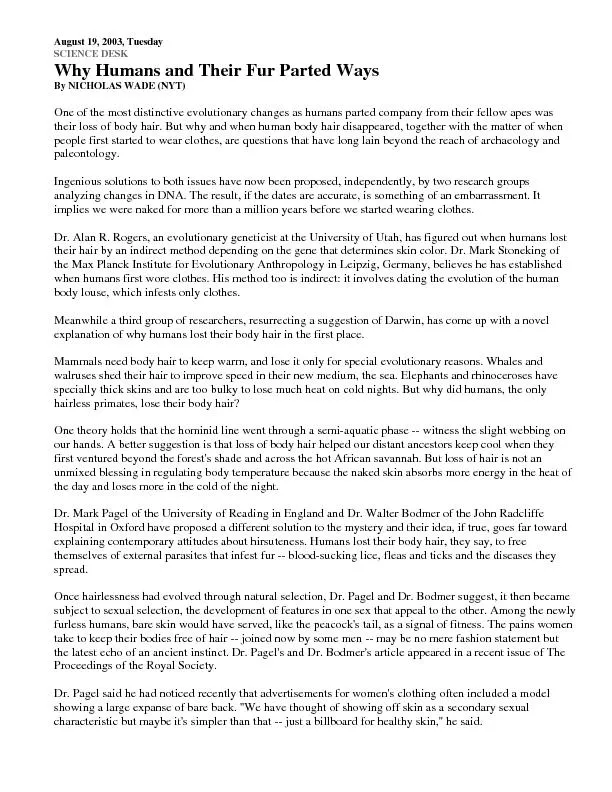PDF-August 19, 2003, Tuesday SCIENCE DESK By NICHOLAS WADE (NYT) One of th
Author : tatiana-dople | Published Date : 2016-04-23
The message No fleas lice or ticks on me is presumably concealed from the conscious mind of both ir to be retained Dr Pagel and Dr Bodmer suggest that these humid
Presentation Embed Code
Download Presentation
Download Presentation The PPT/PDF document "August 19, 2003, Tuesday SCIENCE DESK By..." is the property of its rightful owner. Permission is granted to download and print the materials on this website for personal, non-commercial use only, and to display it on your personal computer provided you do not modify the materials and that you retain all copyright notices contained in the materials. By downloading content from our website, you accept the terms of this agreement.
August 19, 2003, Tuesday SCIENCE DESK By NICHOLAS WADE (NYT) One of th: Transcript
Download Rules Of Document
"August 19, 2003, Tuesday SCIENCE DESK By NICHOLAS WADE (NYT) One of th"The content belongs to its owner. You may download and print it for personal use, without modification, and keep all copyright notices. By downloading, you agree to these terms.
Related Documents














